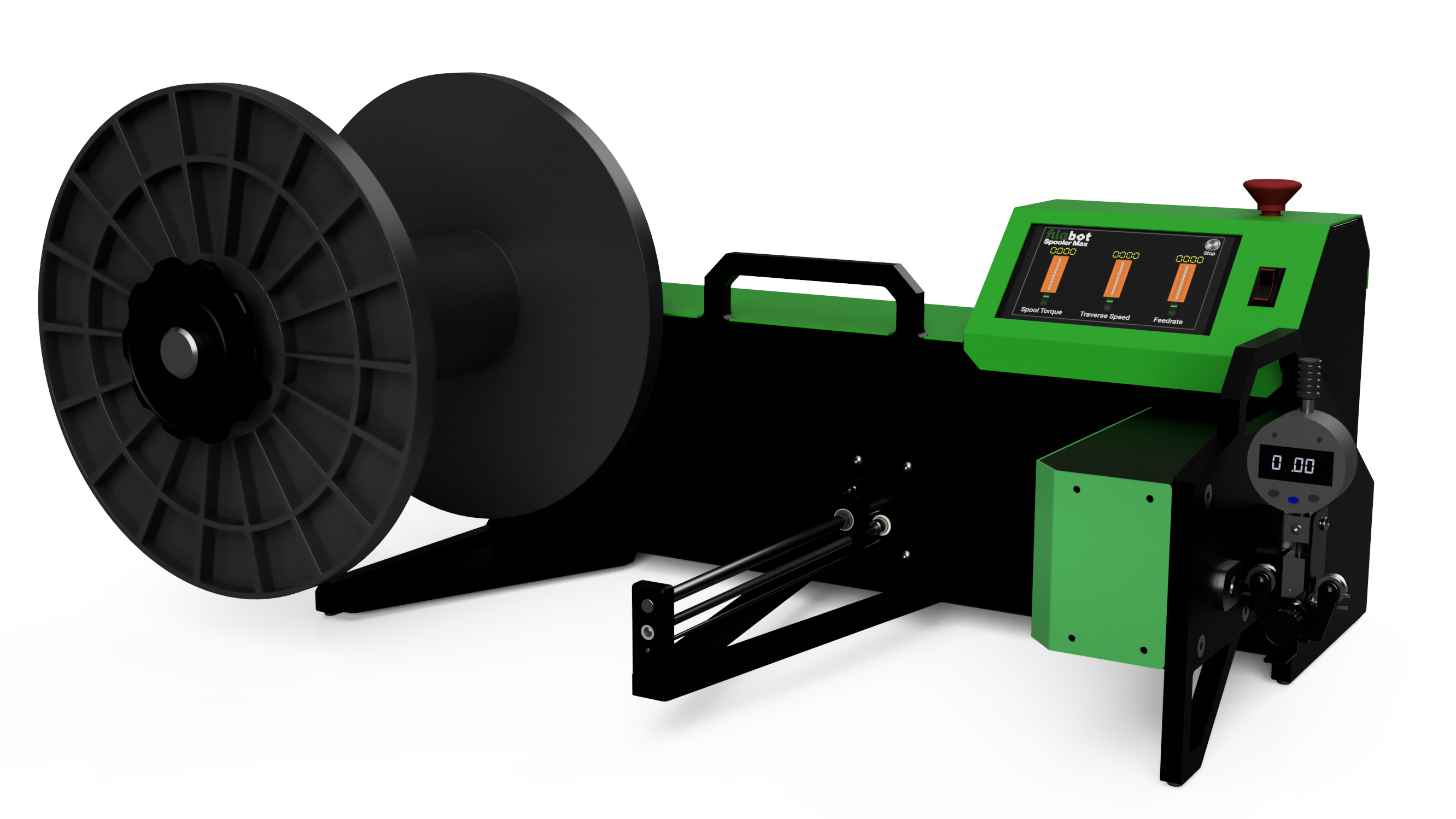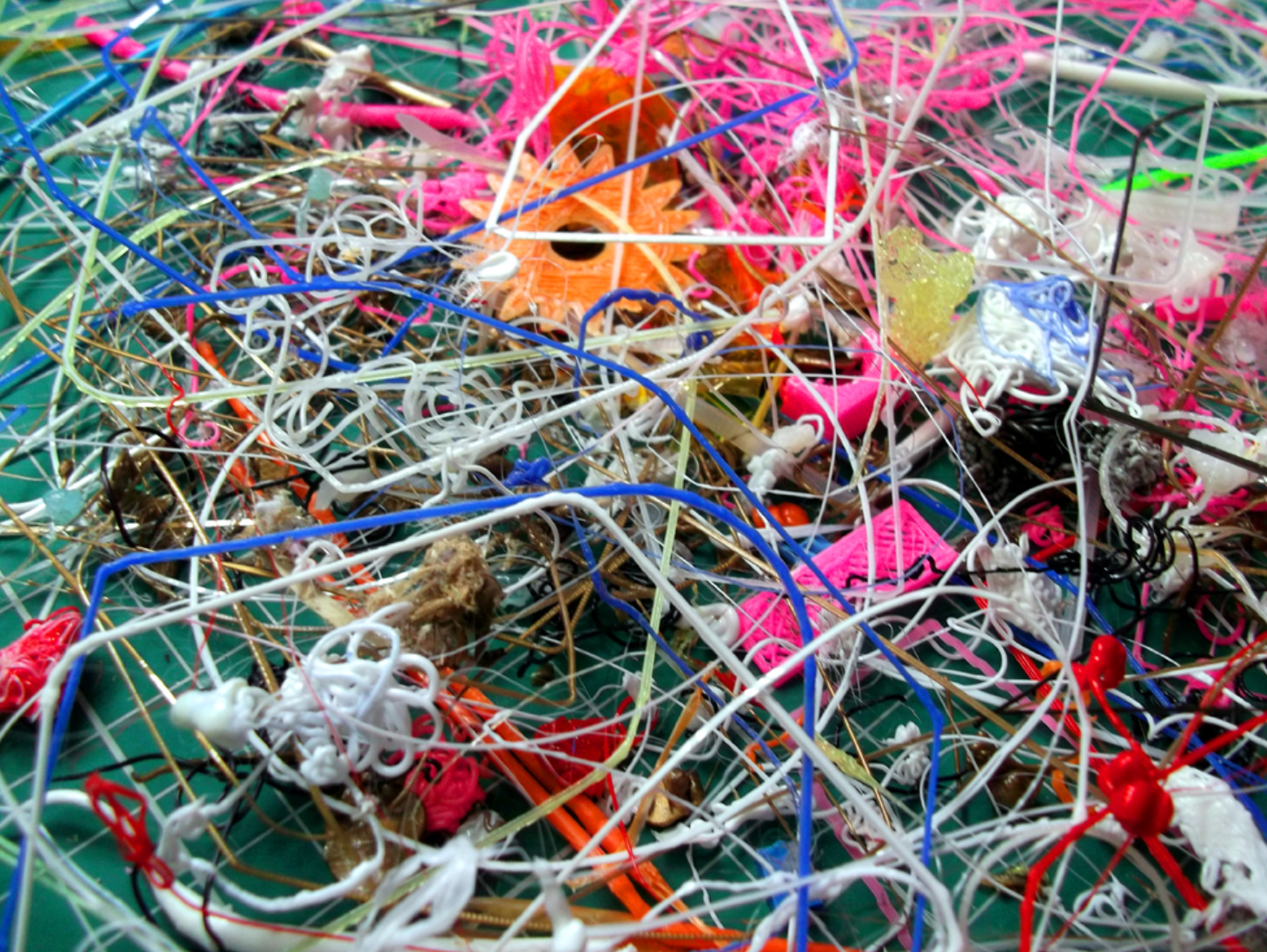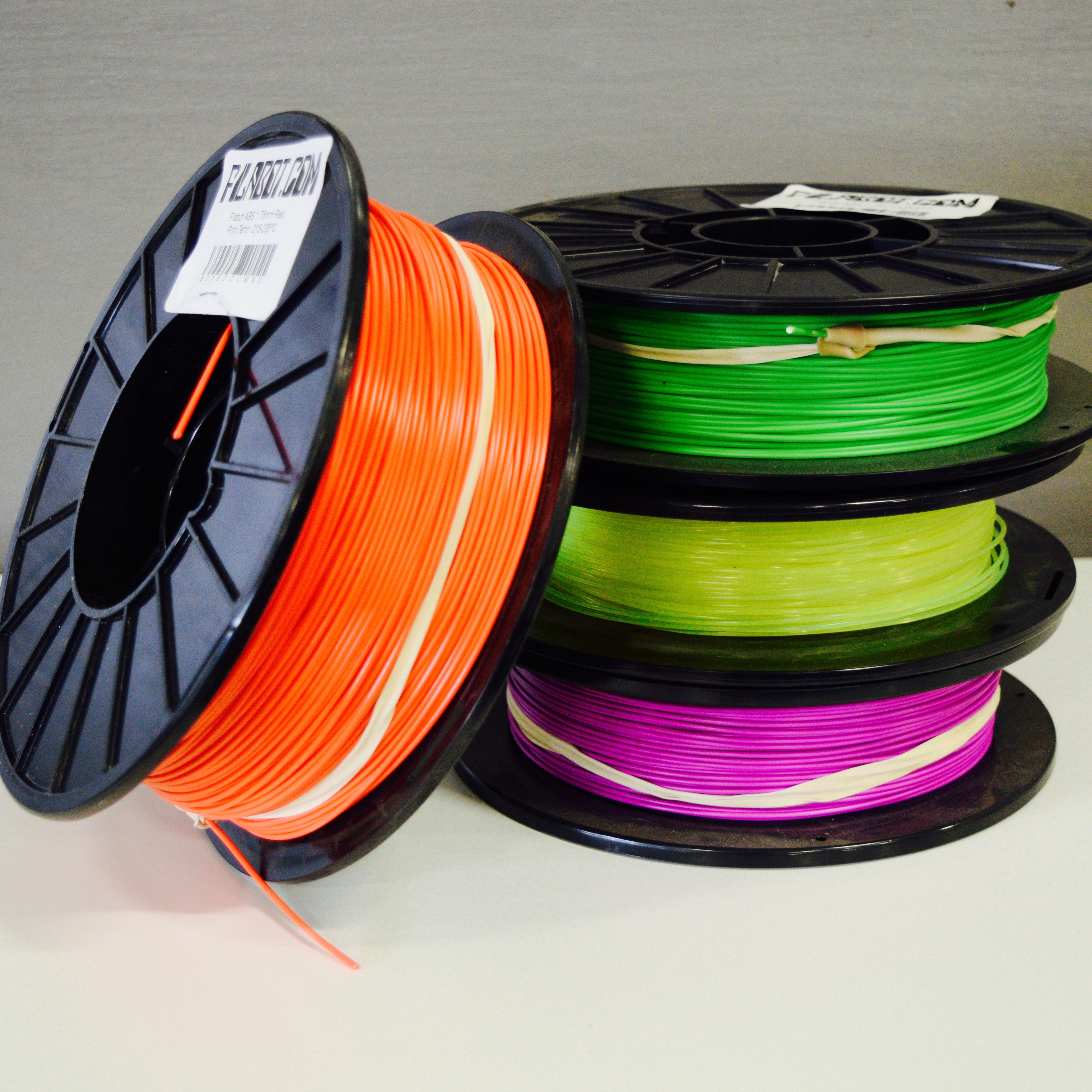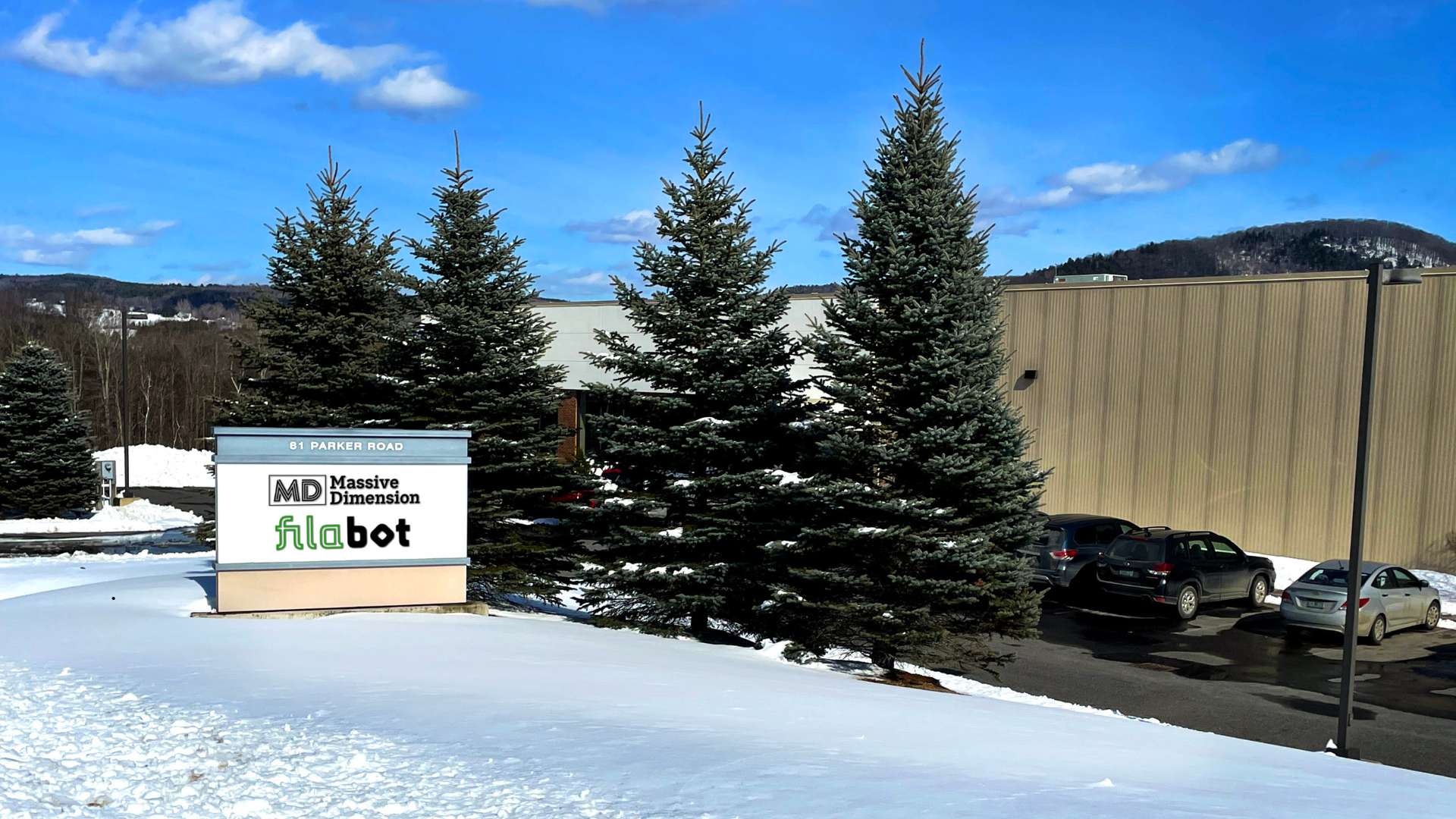Where Failed 3D Prints Go To Die (And What You Can Do About It)

3D printing with thermoplastics has changed the game for many industries but not without its own share of trials and tribulations (I see your heads nodding). While success may be measured by the speed, size, and resolution at which we can print objects, there are other factors to consider. Let’s step back and get some perspective.
Response to Technology
Throughout human history, new technologies have always experienced an ongoing series of advances, setbacks, and responses that pave the way to a vetted and realistic application. Often our eagerness to deploy the latest innovation overshadows our ability to use caution and forethought about the full repercussions. We get excited about our new gas grill and fail to notice how burnt the chicken is or how much propane we’ve ripped through. We meet a stranger in Vegas after a night of festivities and conclude that marriage is the immediate next step, only to find in the morning, we married a stranger in Vegas. Or my son discovering that duck tape can also be used to blockade his sister from his room, only to discover that this also leaves him blockaded in his room. I did not meet his mother in Vegas by the way, but I digress.
On a more serious note, the advent of the affordable automobile allowed millions of people to enjoy the freedom of transportation. It also revealed the risk of traveling at high speeds, and as a result seat belts became not only a standard feature but an enforced regulation.
In a similar way, our understanding of greenhouse gases and their effect on the environment came after civilization’s development of using fossil fuel to create electricity. Lucky us! We had discovered a seemingly endless supply of cheap energy, only later to realize the consequences of burning it and releasing carbon dioxide and a slew of toxins into the air. Our response was slow to adapt scrubber technology, carbon credits and higher efficiency equipment to mitigate the problem.
The Double-edged Sword of 3D Printing
Today we are living through the toddler years of 3D printing. We’re beginning to realize the obvious power for doing good with it. We’re witnessing unprecedented progress in the realms of rapid prototyping, prosthetics for health care, and disruption in manufacturing, to name a few. But before we reach the teenage years of this radical technology (or much sooner), we need to deal with the elephant in the room: that we’ve created a new monster - one that devours endless streams of virgin plastics and excretes yet more waste into the cycle of an already broken waste system.
It would be more than fair to say that plastic in most of its many forms is a wonderous and magical invention. Among a long list, it’s strength to weight, flexibility of use, water resistance, sterility, and relative cost it make it one of the most significant contributors to the historically high average standard of living that people on earth experience today.
So plastic and 3D printing has huge potential for good, but as we take part in this material revolution, shouldn’t we be considering the potential for more waste being added to the stream?
I know I don’t need to tell you about the waste plastic problem so I’ll just offer a quick reminder. In this 2017 article about waste plastic, a National Geographic study found that 9% of all plastic waste is actually recycled, and we’ve produced a mind-boggling 8.3 BILLION metric tons of it since the 1950’s.
Remember when the Great Pacific Garbage Patch was only the size of Texas, and we couldn’t fathom that? This USA Today article popped up on my phone this morning alerting me to the fact that it’s now TWICE the size of Texas. Two Texases. More than twice as disturbing.
Odds are, you’re using a 3D printer to test ideas. Some of the ideas are great, and some of the things you make you end up using. But to a large extent, 3D printing is about iterating and rapid prototyping, so you wouldn’t be doing this successfully without a growing pile of prints that failed - either the design failed, or the print failed, but it’s in the pile. And the pile has to go somewhere.
The Solution: Filament Extrusion
The good news is that each of us - in our homes, classrooms, laboratories, garages, campuses, maker spaces, or workshops can take action. As we all know, most plastic is recyclable. It can be melted down and formed into more plastic stuff. It can also be ground up, dried and extruded into more filament. Think about this - there aren’t many materials with such efficient and flexible properties.
The next step for 3D printing to become a closed-loop, plastic neutral process (the kind that would most benefit that huge island of floating trash in the ocean) is for makers, designers, prototypes, engineers, students, teachers - anyone who is actively printing plastic - to reclaim their failed prints and end-of-life prototypes and turn them into plastic pellets and filaments as an input back into their system.
To close the loop with your 3D printing you need the following:
- A plastic processing unit that granulates plastics down to a particle size
- An extruder machine to turn the plastic particles or granules into filament
- A spooler to coil the filament for use in a 3D printer

With this setup, you’ve become a mini filament factory where you can not only recycle your own failed prints (and your friends) but also make filament with other plastic inputs. This equipment comes at a cost but has the potential to create overall savings on the purchase of new filament. I’ll cover this in another post, but each user will have a different return on investment depending on the quantity of filament being used.
Remember when they invented swords and then lots of people got cuts on their legs and ripped pants because they were just tucking them into their belts? And then later that century someone invented sheaths (and later the scabbard) and solved the problem? Me neither, but I imagine that’s how it went down.
The point is, all technology has it’s burst - everyone leaping to adapt - and then it’s response. We are now in the response stage of the 3D printing phenomena, and the responsible thing to do is also the most cost-effective: recycle your failed prints, and more, into more filament.





3 comments
Maderacain
what’s a cheap way to reuse filament?
what’s a cheap way to reuse filament?
jon
I actually enjoyed the print with the partial head. Very abstract!!
I actually enjoyed the print with the partial head. Very abstract!!
Thecosmeticboxes
Nice 3D Printing Blog! It’s actually a great and useful piece of info. I am satisfied that you just shared this helpful info with us.
Thank you!
Thecosmeticboxes
Nice 3D Printing Blog! It’s actually a great and useful piece of info. I am satisfied that you just shared this helpful info with us.
Thank you!
Thecosmeticboxes